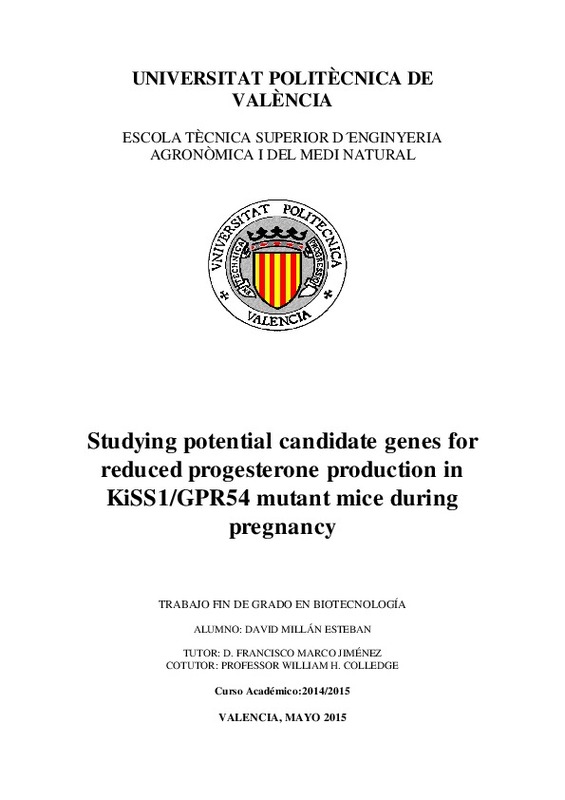JavaScript is disabled for your browser. Some features of this site may not work without it.
Buscar en RiuNet
Listar
Mi cuenta
Estadísticas
Ayuda RiuNet
Admin. UPV
Defining the cause of reduced progesterone levels during pregnancy in Kiss1/Gpr54 mutant mice
Mostrar el registro completo del ítem
Millán Esteban, D. (2015). Defining the cause of reduced progesterone levels during pregnancy in Kiss1/Gpr54 mutant mice. http://hdl.handle.net/10251/53321.
Por favor, use este identificador para citar o enlazar este ítem: http://hdl.handle.net/10251/53321
Ficheros en el ítem
Metadatos del ítem
| Título: | Defining the cause of reduced progesterone levels during pregnancy in Kiss1/Gpr54 mutant mice | |||
| Autor: | Millán Esteban, David | |||
| Director(es): | ||||
| Entidad UPV: |
|
|||
| Fecha acto/lectura: |
|
|||
| Resumen: |
[ES] La kisspeptina, un neuropéptido codificado por el gen Kiss1, es requerida para la activación del eje reproductivo en la pubertad en los mamíferos y para el mantenimiento de la fertilidad en adultos. Los ratones que ...[+]
[EN] Mutant mice for Kiss1/GPR54 gene lack kisspeptin, a neuropeptide required for the activation of the reproductive axis, hence inducing fertility failures. Hormone treatment in these females matures the reproductive ...[+]
|
|||
| Palabras clave: |
|
|||
| Derechos de uso: | Reserva de todos los derechos | |||
| Editorial: |
|
|||
| Titulación: |
|
|||
| Tipo: |
|
recommendations
Este ítem aparece en la(s) siguiente(s) colección(ones)
-
ETSIAMN - Trabajos académicos [3547]
Escuela Técnica Superior de Ingeniería Agronómica y del Medio Natural







